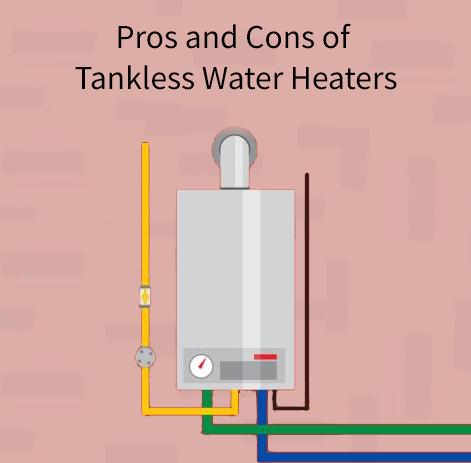It is becoming somewhat more and more popular for people to choose to install a tankless water heater for their home instead of the regular one. There is definitely a reason for this shift in preference and it is a valid one, too, at that. See, when you heat up water for daily use, the process takes up as much as 25% of the energy allocated for the house you reside within. And that is for each time you heat the water up. Imagine the impact it gives you when you at least heat the water three times a day. Your utility bills would rise so high you would think is it even worth it to install a water heater at home in the first place. So, obviously, the reason for a shift in preference mentioned before is attributed to the fact that people tend to choose something that offers a higher level of efficiency over another that clearly drains their hard-earned money.
The big difference between a regular water heater and its tankless counterpart is in their way of heating the water itself. A regular water heater is basically in the state of being turned on all the time. This is designed as such in order to make the hot water available regardless of when you need to use some. So, clearly, as much as this is convenient for you, it goes without saying that this is why your electricity bills are creeping up at the end of every month. On the other hand, the water heaters only heat up the water the moment you are in need of some. This on-demand heating system saves more on electricity bill because you can practically control how the water gets heated up.
An on-demand water heater like this uses varieties of fuel to produce hot water for you to consume. Some make use of electricity, some natural gas, while some other propane. Energy consumption-wise, gas-based tankless water heating machine are said to be the most efficient ones. Data shows that gas-based heaters like this are 22% more efficient as opposed to the electric types. Through the use of gas-based models, you can save up to somewhere around $75 per year, which equates to use as much as 77 gallons of hot water every day. However, the tankless version of a water heater will set you back as high as 3 times as much compared to the conventional one. So, apparently, if you do plan on changing your conventional water heater to a tankless one, there are some considerations to take.
Advantages of using a tankless water heater include:
1. Hot water is always available.
2. It obviates the need for having a tank to store hot water.
3. It sizes significantly smaller than the conventional one so installation should not be of any concerns.
4. Conventional water heaters bear the risk of losing heat. Tankless ones don’t.
5. Per minute, there is as much as between 2 and 5 gallons are provided.
6. There is a lower risk of water damage in using tankless models.
7. Gas- and electricity-based water heaters can help save more money. The gas models are known to supply flow rates that are higher.
8. Conventional water heaters can only be used for 12 years. The tankless ones can for 20 years.
Disadvantages of using a tankless version of a water heater include:
1. Inconsistent temperature.
This is perhaps the most common kind of complaint when it comes to using a tankless version of a home water heater. The matter of water temperature is affected highly by several factors. Chief among them are the size and type of the heater that you install and the number of both appliances and rooms you plan to supply hot water for.
To put this into perspective, running a hot bath and using a dishwasher all at the same time could impact the temperature limits your heater can provide.
The solution to this problem could range from installing a type of water heater that can serve the entire house, both the rooms and the appliances, to installing more than just one heater. In addition, installing one heater for one specific appliance can also help maintain a more stable temperature.
2. Costs.
The cost of replacing the water tank with a tankless version of the water heater could range anywhere between $800 and $1,150. The total cost for installing the heater could hit the $1,200 mark, including a new system of ventilation and upgrading gas pipes or installing new outlets for electricity.
Still, a tankless version of a water heater can be worth your dime if you know some important things there are to know about its installation. Below are the facts you need to take into consideration before buying and installing a tankless heater:
1. You need to choose the water heater by comparing the peak demand of your house’s needs of hot water. To put it simply, you need to find out the amount of hot water needed to meet everyone’s needs at a certain time. For instance, measure the amount of hot water needed to meet everyone’s needs of taking a hot shower in the morning and compare the number you attain with how many heaters required to satisfy that number.
2. Think about how many appliances you want to supply hot water for.
3. When it comes to choosing either using gas- or electricity-based water heater, gas models provide more than the electric ones.
4. Choosing to use a tankless water heater can not only be beneficial in reducing the number of utility bills you need to pay off every month but also help with environmental issues. However, the actual number of cost-saving could either be significant or negligible. This depends greatly on the unit’s type and size that you use at the time. Smaller-sized units could be helpful for day to day utility but seeing that they can only provide for limited numbers of rooms and appliances, the financial effects of using them might not be felt too much, if not nothing at all.







